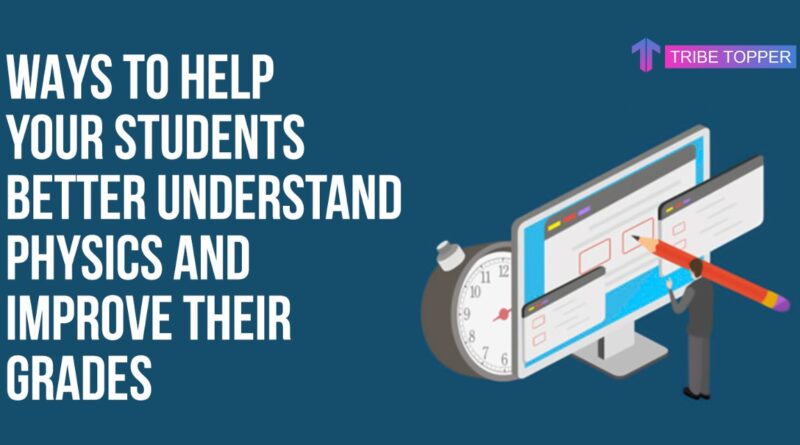Ways to Help Your Students Better Understand Physics and Improve Their Grades
How can you help your IB Chemistry students better understand physics? Improve their grades? Get them excited about the subject. This guide will teach you exactly that! After reading it, you’ll be able to identify common problems and mistakes that IB Chemistry students make in their study of Physics and how to help them avoid those errors.
In addition, you will learn to endure the new techniques to adapt by the time you make up your mind for further preparation and it will definitely let you proceed successfully with your future help of Physics learning.
6 Ways to Help Your IB Chemistry Students Better Understand Physics and Improve Their Grades
Here are the six methods that you can implement to help your students to understand Physics.
1. Introduce high-school level Physics before introducing university level
In order to help your IB Chemistry students better understand Physics, it is important to introduce them to high-school-level Physics concepts before moving on to university-level material. This will give them a strong foundation on which to build their understanding of more complex Physics concepts. If the concepts will be clear from the roots, you will be even more precise to choose what to study or what not to.
2. Break up learning into short, manageable lessons
- Start with the basics: Teach your students the basic concepts of Physics so they have a foundation to build upon.
- Make it relatable: Help your students see how Physics is relevant to their everyday lives.
- Encourage hands-on learning: Doing experiments and participating in activities will help your students better understand the concepts.
- Show your students diagrams, charts, and other visuals to help them grasp the material.
- Explain things clearly: Use simple language that your students will understand.
- Do not use jargon and technical terms as much as possible.
- Encourage questions.
- Let your students know that it’s okay to ask questions and encourage them to do so often.
- Finally, Be patient.
3. Create clear analogies with everyday experiences
Everyday experiences can be used to help explain Physics concepts. For example, when you jump into a pool, you are using the concepts of buoyancy and density. You can also use analogies to help students understand complex Physics concepts. For example, the wave-particle duality of light can be explained by comparing it to the behavior of sound waves.
Use real-world examples whenever possible. The more relatable the example, the better. For instance, when teaching about electrical circuits, you could use an example of a simple circuit in your home (like a lamp) or a more complex one (like the electrical grid). Encourage students to ask questions and brainstorm with their peers.
4. Organize your lesson plan according to individual student needs
Start by finding out what your students are struggling with the most. Are they having trouble with the concepts? The maths? The applications? Once you know what’s giving them the most trouble, you can focus your lesson plan on those areas. Make sure your students are comfortable with the basics before moving on to more difficult concepts.
If they’re still struggling with understanding how atoms work, for example, there’s no point in trying to teach them about nuclear Physics. Use a variety of teaching methods in your lessons. Some students will learn best by listening to a lecture, while others will benefit from hands-on activities or watching demonstrations. Experiment until you find a combination that works for your class as a whole.
5. Give students an opportunity to experience examples of what they are learning
One way to help your students better understand Physics is to provide them with opportunities to experience examples of what they are learning. For instance, you could take them on a field trip to a local science museum or have them participate in a Physics demonstration. You could also give them access to online resources, such as simulations and videos.
Additionally, you could have them work on projects that require them to apply their knowledge of Physics. By giving your students opportunities to experience and apply what they are learning, they will be better able to understand and retain the material.
6. Present new content in a low-stakes context first
Introduce new content in a low-stakes context, such as during a review session or when you have extra time in class. Give students opportunities to explain the concepts in their own words, either verbally or in writing. Use analogies and real-world examples to help students connect the dots. Fosters students to ask questions and participate in class discussions. And finally, make sure you’re available for one-on-one help when needed.
Takeaway
Students don’t have to accept their low Physics grades as the end all be all. In fact, there are many ways they can improve their grades in this class once they start applying the right study tactics. The time it takes to get a better grade certainly won’t hurt them in the long run, and it could give them greater motivation to succeed in other classes that are far more important than Physics—like math and English literature.
Now that you know how to help your students really understand what’s going on in this course, it’s up to them to pull a few all-nighters and go the extra mile. Here’s to hoping for the best!
